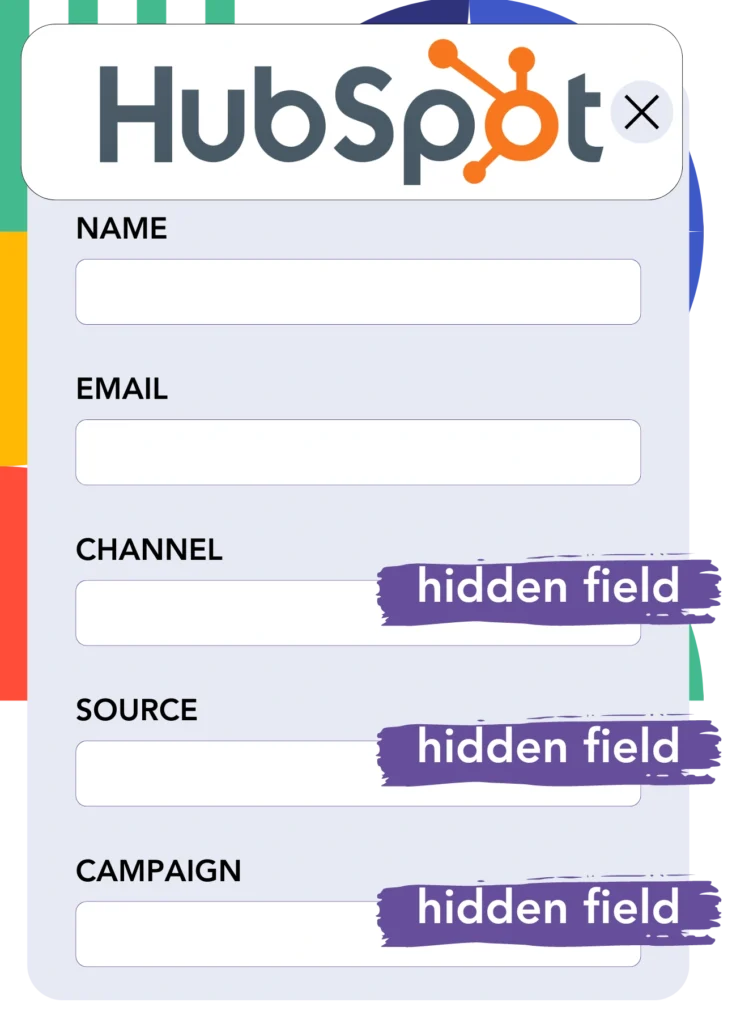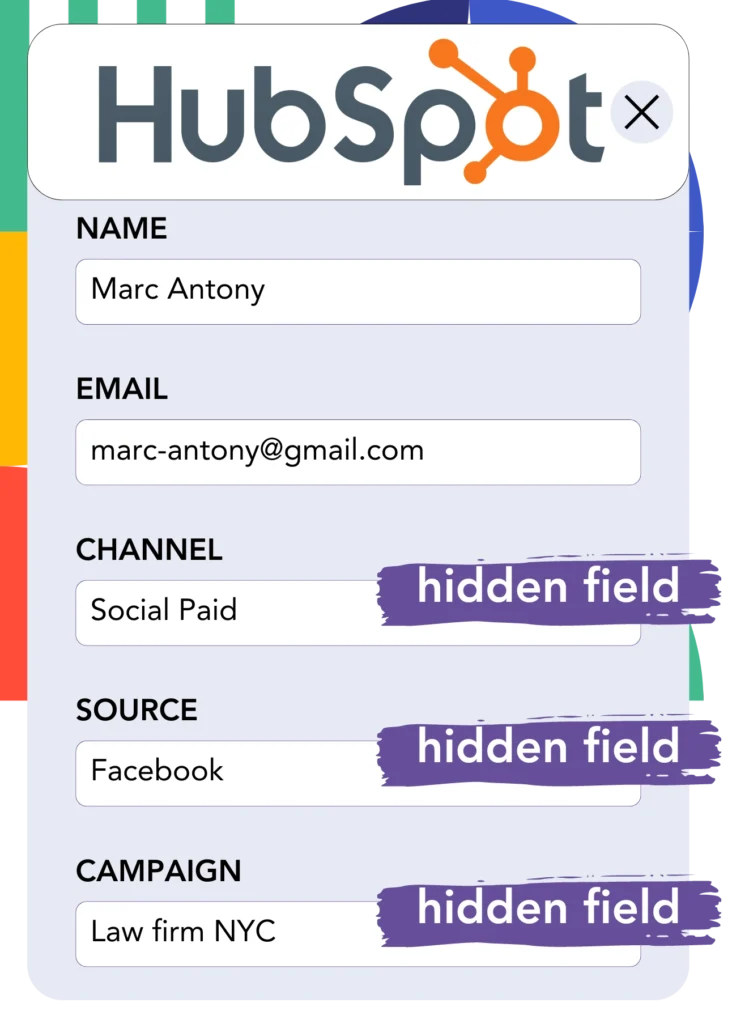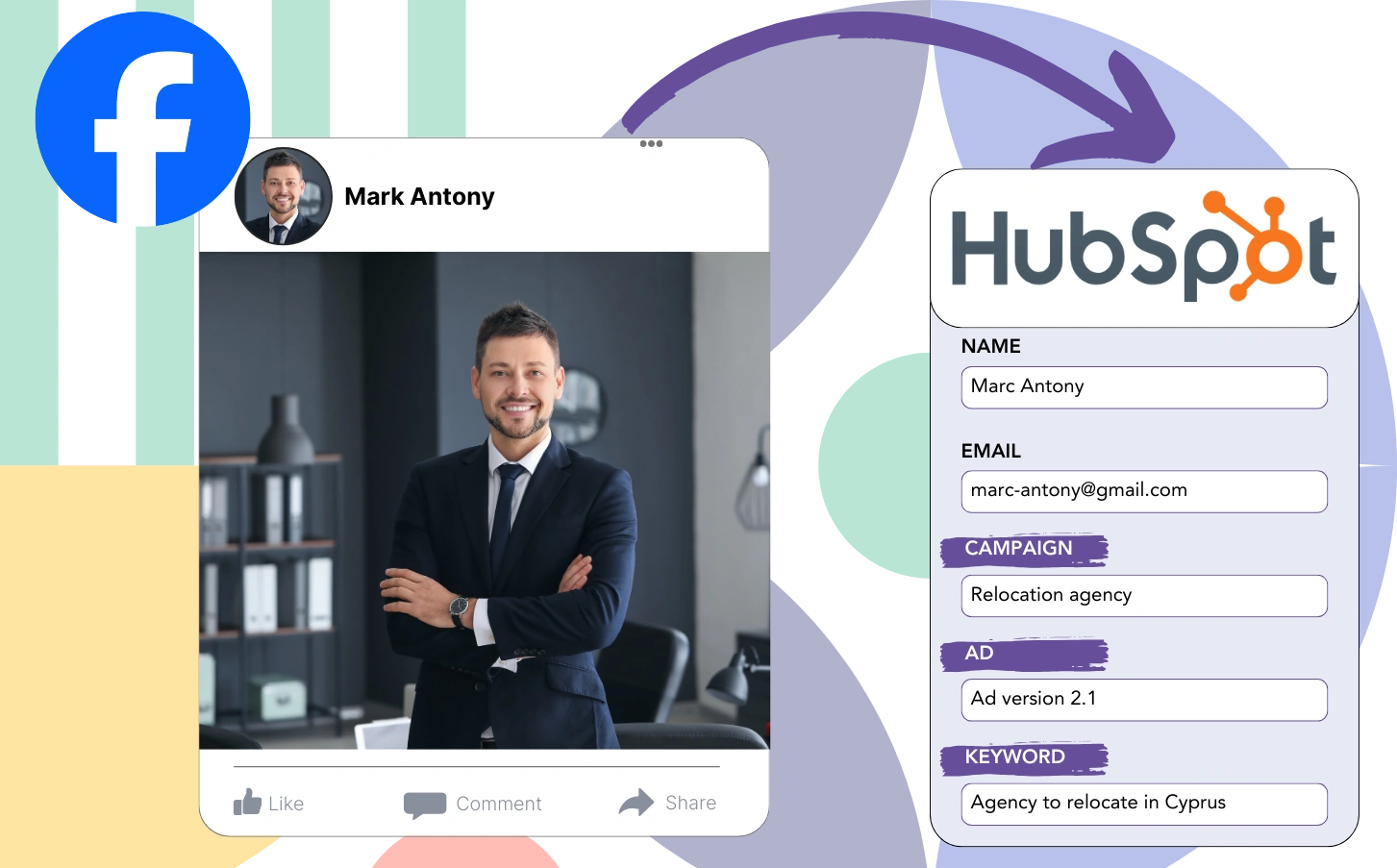Do you find it challenging to track the specific ads that are driving sales for your business?
However, you may not have visibility into the exact sources of these individual leads.
This lack of insight makes it challenging to assess which ads are driving the most valuable conversions.
LeadSources provides a solution.
LeadSources tracks every aspect of your Facebook ads, from campaign to ad level, including the lead data.
HubSpot Forms allows you to archive comprehensive Facebook ads data, covering campaign, ad set, audience, and individual ads per lead.
With these reports, such as “Top Lead-Generating Audiences,” you can decide which audiences to continue supporting or discontinue.
Let’s examine this further!
Capture Facebook ads in HubSpot Forms
Step 1: Add Leadsources in the head tag of your website

Sign up to Leadsources.io, and benefit from our 14-day free trial.
Place the LeadSources tracking code in the head section of your website; coding knowledge is not required.
Simply follow this easy step-by-step guide.
Step 2: Add the UTM parameters to your Facebook ads campaigns

Add the desired UTM parameters to all your Facebook ad campaigns, covering campaign, ad set, audience, and ad levels.
Consider incorporating these UTM parameters into the links of your Facebook ads:
- UTM_source
- UTM_campaign
- UTM_term
- UTM_content
LeadSources also records lead source information, such as channel, landing page, and landing page subfolder, without requiring UTM parameters.
Step 3: Add the hidden fields in HubSpot Forms

Upon submission of your HubSpot Forms, LeadSources automatically enters Facebook ads data, including campaign, ad set, audience, and ad, into the hidden fields.
Consult our detailed instructions to include hidden fields in HubSpot Forms and complete the configuration.
LeadSources then directly stores the Facebook ads data into your HubSpot Forms (see Step 4).
Step 4: Capture the Facebook ads data in HubSpot Forms

When a visitor clicks on your Facebook ad and lands on your website, LeadSources collects data such as campaign, ad set, audience, and ad.
The Facebook ads data is automatically added to the hidden fields of your HubSpot Forms by LeadSources.
When the form is submitted, both the Facebook ads data and the form responses are transmitted to the HubSpot Forms submissions page for each lead.
How does Leadsources work?
By inserting the LeadSources tracking code into the head tag of your site, it captures Facebook ads data (campaign, ad set, audience, ad, etc.) each time a visitor lands on your website.
Subsequently, the Facebook ads data is stored in the hidden fields of your HubSpot Forms.
The following visitor data will be collected by LeadSources:
- Channel
- Source
- Campaign
- Content
- Term
- Landing page
- Landing page subfolder
This ensures you can track important lead source information even in the absence of UTM parameters, for example, when traffic is from organic sources such as:
- Google Search
- Instagram bio link
- Social media posts
- Etc.
LeadSources offers robust tracking of your lead source, even in the absence of UTM parameters, unlike many tools that require them.
As a result, LeadSources provides lead data tracking from every channel, unlike other tools:
- Organic Search
- Paid Search
- Organic Social
- Paid Social
- Referral
- Affiliate
- Display Advertising
- Direct Traffic
This enables you to track and aggregate all lead source data into a single place.
How to run performance reports
Having your Facebook ads data stored in HubSpot Forms allows you to create performance reports including:
- Leads per campaign
- Leads per Ad set
- Leads per audience
- Leads per ad
- Etc.
By doing so, you can make more strategic choices about your Facebook ads budget.
We will review the various reports you have the capability to create.
Lead performance reports
Reports can be created to illustrate the number of leads generated by:
- Channel
- Campaign
- Ad set
- Audience
- Ad
- Landing page
- Landing page subfolder
Example #1
Data from different channels, including SEO, PPC, and email, can be exported to generate a report named “Leads by Channel.”

Example #2
After determining the leading channel (e.g., Facebook ads), you can focus on it to review the number of leads from each individual campaign.

Example #3
Upon locating the campaign that generates the most leads, you can analyze which particular audience, ad set, or ad is responsible for these results.

Sales performance report
While identifying the ads and audiences that generate the most leads is valuable, do they also drive higher revenue?
By transferring your HubSpot Forms data into a CRM such as GoHighLevel, you can create in-depth sales reports.
Example:
| Channels | Search Paid | Social Paid |
| Leads | 50 | 75 |
| Sales | 5 | 6 |
| Average order value | $150 | $100 |
| Revenue | $750 | $600 |
The review of ads on Google and Facebook indicated that Social Paid ads generated more leads compared to Search Paid ads.
The analysis conducted over multiple weeks indicated that the Search Paid channel produced more revenue with fewer leads than the Social Paid channel. As a result, the decision was made to increase the Search Paid campaign budget.
LeadSources tracks the source of each lead in HubSpot Forms, whether they come from ads, organic search, social, email, etc. and syncs that data with each submission. See the full breakdown on the lead source in HubSpot Forms page.

